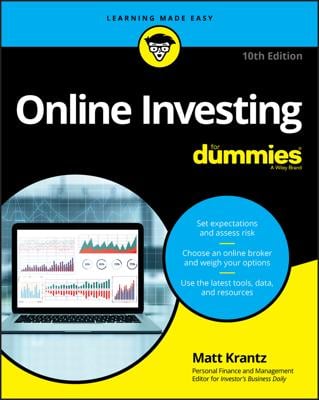After you pick your broker, you must be sure you know the trading rules. Although federal law mandates margin requirements, sets trade settlement rules, and bans free riding, brokerage firms sometimes have even more stringent rules for their clients. You need to check with your broker to find out any additional rules your chosen firm imposes.
Rules for stock trading fall under the jurisdiction of the Federal Reserve, which specifies its stock trading regulations in Regulation T. Rules spelled out under Regulation T encompass margin accounts, broker-dealer accounts, securities transactions, credit extended based on securities, and other factors related to securities markets.
Margin requirements
The Federal Reserve’s Regulation T specifies how much you can borrow when you use a margin account to purchase new shares of stocks on margin. This initial margin requirement permits you to borrow up to 50 percent of the cost of the new shares.
If the stock price increases, your equity balance increases. If the stock price decreases, your equity balance decreases. In either case, your margin balance remains the same, $10,000. The only way to reduce the outstanding margin balance is to deposit extra cash into your account or sell the shares of stock.
When your stock price increases, your equity balance increases and you may use the increased equity as collateral to borrow additional money to buy additional shares of stocks. You may borrow up to the value of the increased equity balance, which increases your margin balance.
However, if your equity balance decreases, NASD rules regulate the minimum equity position permitted in your account. Currently, the minimum is 25 percent of the total value of all margined securities if one is a pattern day trader. Some brokers may require more.
For a pattern day trader, if the total value of the stock falls below $13,332, then the equity balance in your initial $10,000 portfolio will be less than 25 percent of the total remaining value. The math is simple: 25 percent of $13,332 is $3,333. Your cash balance is still $0, and your margin balance is still $10,000. Subtract $10,000 from $13,332 to determine your equity balance, which is $3,332.
When this occurs, your broker will call and demand additional collateral to support the outstanding margin loan. This is a margin call. You may meet your margin-call requirements by depositing more cash, or you may deposit fully paid, unmargined securities from another account. If you don’t deposit additional collateral, your broker is permitted to sell up to four times the amount of stock required to meet your margin call.
As a trader, you should never satisfy a margin call. Instead, you should close the offending position(s). It’s possible that an extraordinary event may cause the value of your stocks to fall below the amount owed on your outstanding margin loan. If this happens, your broker will close your positions, but you must still repay the debt.
Not all stocks can be bought on margin and neither can all stocks be used as collateral. Be sure you understand the margin requirements imposed by your broker.
FINRA Rule 2520 was amended in 2001 to restrict day-trading activity. Your broker or the FINRA will consider you a pattern day trader after you buy or sell any security on the same day in a margin account and execute four or more trades during a five-day business period. If you’re pegged as a pattern day trader, you’re required to maintain $25,000 in your margin account.
Settle trades
When you place an order to buy a stock, you must settle that transaction in three business days. This settlement cycle is known as T + 3. The brokerage firm must receive your payment for any securities you buy no later than three days after the trade is executed. Today, many brokers require that the cash be in your account before placing the trade unless you have a margin account.
If you’re selling a stock, it’s probably being held in your brokerage account and will be taken out of that account on the day of settlement. Options and government securities trade on a T + 1 settlement cycle, which means these transactions settle the next trading day.
Free riding
Free riding means that you must pay for a stock before you can sell it, and because settling a stock transaction takes three days, that means, in theory, you can actually buy a stock and then place an order to sell it before the stock purchase actually settles. You can actually buy and sell a stock without any cash because of the lag time in settling the account.
This is a cash account problem. Although many swing and day traders actually turn around stock purchases and sales that quickly, they typically trade in a margin account and are able to sidestep the problem. Still, day traders and swing traders must have enough cash or buying power in their accounts to cover all purchases of stock.
Formally, this rule is found in Section 220 of Regulation T, which states that in a cash account a brokerage firm may buy a security on your behalf — or sell a security — if either of the following applies:
You have sufficient funds in the account.
The firm accepts in good faith your agreement to make a full-cash payment for the security before you sell it.
If you do ever buy and sell a security before the settlement cycle (T + 3) is complete and without sufficient cash in your account, a brokerage firm can make what is called an intraday extension of credit, but it exposes the firm to increased risks. Most brokerage firms require active traders who buy and then sell securities within the settlement cycle to conduct those activities within a margin account.
If you take a free ride and haven’t made some type of credit arrangement with your broker, your broker is likely to freeze your account for 90 days.

